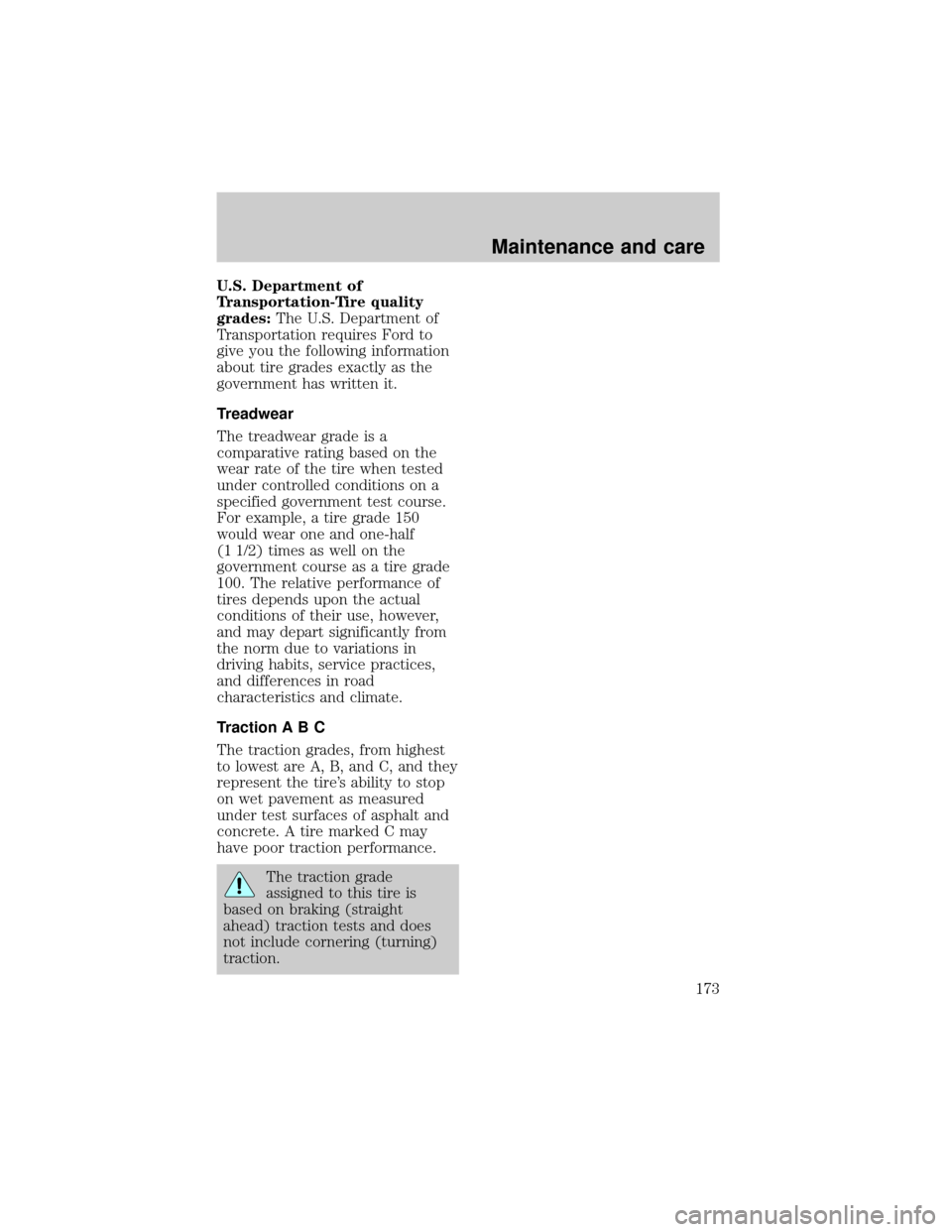Page 5 of 216
VOL-PUSH ON
AM
FMBASS
TREBBAL FADEAUTO
SET
SEEKTUNEDISCSSCAN EJTAPE
CDDOLBY 8 NR
REW
1FF
2SIDE 1-2
34COMP
5SHUFFLE
6
ST FM 1
FM 1
FLOOR
PANELLO
HI
COOL WARMDEF FLR&
DEF PANEL &
FLOOR OFF
4H
2HA4WD4L
HI
COOL WARM
OFFPANELFLOOR
DEFFLR
& DEF PANEL &
FLOORLO
4WD Control
(pg. 23)Climate controls
(pg. 23) Gearshift
(includes
overdrive button)
(pg. 104)Electronic sound
system; refer to
Audio Guide
(pg. 23)
Instrumentation
5
Page 23 of 216
4WD CONTROL (IF EQUIPPED)
This control operates the
Control-Trac 4WD. Refer to
Control trac automatic
four-wheel drive systemin the
Drivingchapter for more
information.
AUDIO SYSTEM
Refer to the ªAudio Guideº for
instructions on how to operate the
audio system.
CLIMATE CONTROL SYSTEM
Manual heating and air
conditioning system
Fan speed control
Controls the volume of air
circulated in the vehicle.
Temperature control knob
Controls the temperature of the
airflow inside the vehicle.
4H
2HA4WD4L
HI
COOL WARM
OFFPANELFLOOR
DEFFLR
& DEF A/C
MAX
A/CPANEL &
FLOOR
LO
HI LO
COOL WARM
Controls and features
23
Page 24 of 216

Mode selector control
Controls the direction of the
airflow to the inside of the vehicle.
The air conditioning compressor
will operate in all modes except
PANEL and FLOOR. However, the
air conditioning will only function
if the outside temperature is about
10ÉC (50ÉF) or above.
Since the air conditioner removes
considerable moisture from the air
during operation, it is normal if
clear water drips on the ground
under the air conditioner drain
while the system is working and
even after you have stopped the
vehicle.
Under normal conditions, your
vehicle's climate control system
should be left in any position other
than MAX A/C or OFF when the
vehicle is parked. This allows the
vehicle to ªbreatheº through the
outside air inlet duct.
²MAX A/C-Uses recirculated air
to cool the vehicle. MAX A/C is
noisier than A/C but more
economical and will cool the
inside of the vehicle faster.
Airflow will be from the
instrument panel registers. This
mode can also be used to
prevent undesirable odors from
entering the vehicle.
²A/C-Uses outside air to cool the
OFFPANEL
A/CFLOOR
DEFFLR
& DEFMAX
A/C
PANEL &
FLOOR
Controls and features
24
Page 26 of 216

²FLR & DEF-Distributes outside
air through the windshield
defroster ducts and the floor
ducts. Heating and air
conditioning capabilities are
provided in this mode. For
added customer comfort, the air
distributed through the floor
ducts will be slightly warmer
than the air sent to the
windshield defroster ducts. If
the temperature is about 10ÉC
(50ÉF) or higher, the air
conditioner will automatically
dehumidify the air to prevent
fogging.
²DEF
-Distributes outside
air through the windshield
defroster ducts. It can be used
to clear ice or fog from the
windshield. If the temperature is
about 10ÉC (50ÉF) or higher, the
air conditioner will automatically
dehumidify the air to prevent
fogging.
Operating tips
²In humid weather, select DEF
before driving. This will
prevent your windshield from
fogging. After a few minutes,
select any desired position.
²To prevent humidity buildup
inside the vehicle, don't drive
with the climate control system
in the OFF position.
²Don't put objects under the
front seat that will interfere with
the airflow to the back seats (if
equipped).
Controls and features
26
Page 27 of 216
²Remove any snow, ice or leaves
from the air intake area (at the
bottom of the windshield under
the hood).
²If your vehicle has been parked
with the windows closed during
hot weather, the air conditioner
will do a much faster job of
cooling if you drive for two or
three minutes with the windows
open. This will force most of the
hot, stale air out of the vehicle.
Then operate your air
conditioner as you would
normally.
²When placing objects on top of
your instrument panel, be
careful to not place them over
the defroster outlets. These
objects can block airflow and
reduce your ability to see
through your windshield. Also,
avoid placing small objects on
top of your instrument panel.
These objects can fall down into
the defroster outlets and block
airflow and possibly damage
your climate control system.
Controls and features
27
Page 28 of 216
Rear console climate controls
(if equipped)
Depending on the equipment
package of your vehicle, the rear
console may not be equipped with
rear console audio/climate controls.
Turn the air distribution control to
the desired airflow position.
The instrument panel climate
controls must be on in order for
the rear climate control console
controls to work.
Turn the fan speed control to the
desired position.
Select
for air to flow through
these vents:
- VOLUME +
MODE
SEEK MEMORY
- VOLUME +
MODE
SEEK MEMORY
SEEK– VOLUME + BAND
MEMORY
Controls and features
28
Page 30 of 216
In order for the auxiliary
A/C-heater controls to function,
the driver's auxiliary A/C-heater
control must be set to REAR.
The instrument panel climate
controls must be on in order for
the auxiliary A/C-heater to operate.
When the auxiliary A/C-heater
control is set to FLOOR, airflow
only occurs from the third row
seat floor vent located in the
driver's side rear quarter trim
panel.
When the auxiliary A/C-heater
control is set to PANEL, airflow
occurs from the overhead 2nd and
3rd row vents.
Turn the fan speed control knob to
the desired speed.
WARM PANEL FLOOR COOL
REAR OFF
HI
HI
COOL WARM
OFFPANELFLOOR
DEFFLR
& DEF PANEL &
FLOOR
LO
LO OFF
HI
Controls and features
30
Page 173 of 216

U.S. Department of
Transportation-Tire quality
grades:The U.S. Department of
Transportation requires Ford to
give you the following information
about tire grades exactly as the
government has written it.
Treadwear
The treadwear grade is a
comparative rating based on the
wear rate of the tire when tested
under controlled conditions on a
specified government test course.
For example, a tire grade 150
would wear one and one-half
(1 1/2) times as well on the
government course as a tire grade
100. The relative performance of
tires depends upon the actual
conditions of their use, however,
and may depart significantly from
the norm due to variations in
driving habits, service practices,
and differences in road
characteristics and climate.
Traction A B C
The traction grades, from highest
to lowest are A, B, and C, and they
represent the tire's ability to stop
on wet pavement as measured
under test surfaces of asphalt and
concrete. A tire marked C may
have poor traction performance.
The traction grade
assigned to this tire is
based on braking (straight
ahead) traction tests and does
not include cornering (turning)
traction.
Maintenance and care
173